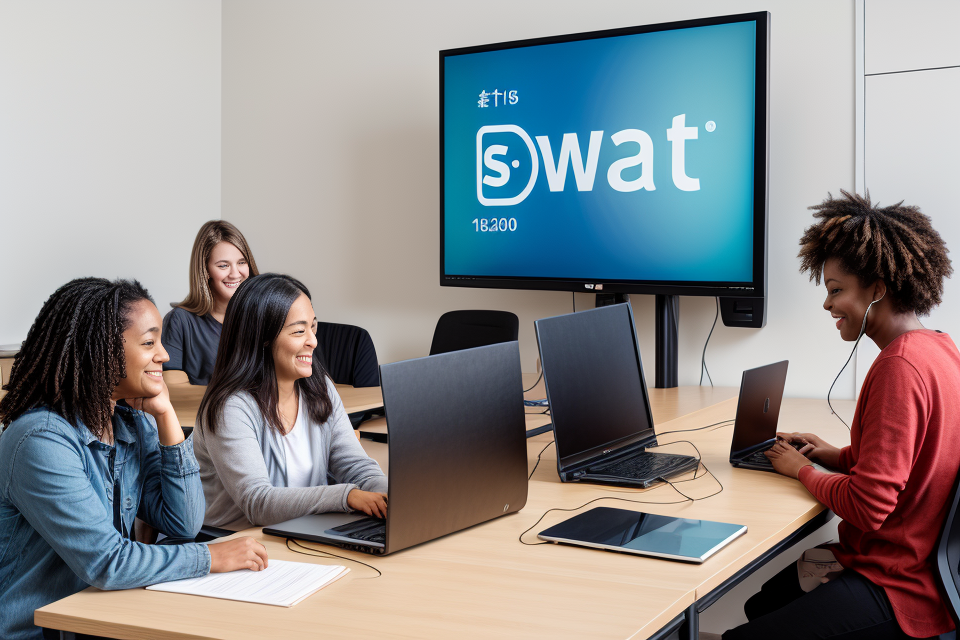
Virtual study groups have become an increasingly popular way for students to collaborate and learn together in the digital age. However, one of the most common questions that arise when forming a virtual study group is how often should it meet? The frequency of meetings can greatly impact the effectiveness and success of the group. In this comprehensive guide, we will explore the factors that should be considered when determining the meeting schedule for a virtual study group, and provide recommendations for creating a productive and efficient learning environment.
Factors to Consider When Determining the Frequency of Virtual Study Group Meetings
Goals and Objectives of the Study Group
Understanding the Purpose and Objectives of the Study Group
The first step in determining the frequency of virtual study group meetings is to understand the purpose and objectives of the study group. The goals and objectives of the study group will vary depending on the subject matter, the level of the students, and the needs of the participants. It is important to identify the specific goals and objectives of the study group in order to align the frequency of meetings with the desired outcomes.
Aligning the Frequency of Meetings with the Goals and Objectives
Once the goals and objectives of the study group have been identified, the frequency of meetings can be determined. The frequency of meetings should be aligned with the goals and objectives of the study group. For example, if the goal of the study group is to review and discuss a specific topic in depth, more frequent meetings may be necessary. On the other hand, if the goal is to provide a general overview of a subject, less frequent meetings may be sufficient.
It is important to note that the frequency of meetings should not be the only factor considered when determining the schedule of virtual study group meetings. Other factors such as the availability of participants, the level of engagement, and the effectiveness of the meetings should also be taken into account.
In conclusion, the frequency of virtual study group meetings should be determined based on the goals and objectives of the study group. The meetings should be aligned with the desired outcomes in order to maximize the effectiveness of the study group.
Availability and Schedules of Group Members
Identifying the Availability of Group Members
- The first step in determining the frequency of virtual study group meetings is to identify the availability of group members. This involves assessing the schedules of each member to determine when they are available to meet.
- It is important to consider the varying schedules of group members, as some may have work, school, or personal commitments that could impact their availability.
- One way to gather this information is to send out a survey or poll to group members, asking them to indicate their availability on a calendar or schedule.
Coordinating Schedules to Find a Suitable Meeting Time
- Once the availability of group members has been identified, the next step is to coordinate schedules to find a suitable meeting time.
- This may involve finding a time that works for everyone, taking into account time zones and other factors that could impact schedules.
- Tools such as online calendars or scheduling software can be helpful in coordinating schedules and finding a time that works for everyone.
- It is important to consider the time zone of each member, as this could impact the availability of certain times.
- It may also be helpful to establish a regular meeting time and frequency, such as once a week at a specific time, to ensure that everyone is able to plan their schedules accordingly.
Topic Complexity and Workload
Assessing the Complexity of the Topic
When determining the frequency of virtual study group meetings, it is essential to consider the complexity of the topic. Complex topics require more time for discussions and collaborations, as they may involve multiple subtopics, intricate relationships between concepts, and extensive research. On the other hand, simpler topics may be covered in fewer meetings, allowing group members to focus on other tasks or projects.
Determining the Workload of Group Members
The workload of group members is another crucial factor to consider when deciding how often to meet. Members with heavier workloads may need more time between meetings to complete their individual tasks, while those with lighter workloads may benefit from more frequent meetings to keep them engaged and motivated. It is essential to balance the workload of each member to ensure that everyone has enough time to complete their tasks while still being able to participate in the study group.
Allocating Sufficient Time for Discussions and Collaborations
To ensure that the virtual study group is productive and effective, it is essential to allocate sufficient time for discussions and collaborations. This may vary depending on the complexity of the topic and the workload of group members. For example, a complex topic may require longer meetings to cover all the necessary ground, while a simpler topic may only require shorter meetings to make progress. Additionally, allocating time for group members to review and provide feedback on each other’s work can help to ensure that everyone is keeping up with the group’s pace and contributing to the overall success of the study group.
Effectiveness of Virtual Communication Tools
When determining the frequency of virtual study group meetings, it is important to consider the effectiveness of the virtual communication tools being used. Here are some factors to consider:
- Evaluating the effectiveness of virtual communication tools: It is important to evaluate the effectiveness of the virtual communication tools being used by the study group. This includes assessing the quality of the audio and video, the reliability of the connection, and the ease of use of the platform.
- Determining the appropriate frequency of meetings based on the tools used: Once the effectiveness of the virtual communication tools has been evaluated, the study group can determine the appropriate frequency of meetings based on the tools used. For example, if the audio and video quality is poor, it may be best to have fewer meetings to avoid frustration and ensure that members can fully participate. On the other hand, if the tools are highly effective, the study group may choose to have more frequent meetings to maximize productivity and collaboration.
It is important to note that the effectiveness of virtual communication tools can vary depending on a variety of factors, including the technology being used, the internet connection, and the location of the participants. As such, it is important to regularly assess the effectiveness of the tools being used and make adjustments as needed to ensure that virtual study group meetings are productive and effective.
Best Practices for Scheduling Virtual Study Group Meetings
Establishing Clear Expectations and Guidelines
When scheduling virtual study group meetings, it is crucial to establish clear expectations and guidelines for the group members. This helps to ensure that everyone is on the same page and knows what to expect from the group and its members. Here are some key points to consider when establishing clear expectations and guidelines for a virtual study group:
- Setting expectations for attendance and participation: It is important to set clear expectations for attendance and participation in the virtual study group. This includes setting a regular meeting time and frequency, as well as communicating any expectations for participation during each meeting. For example, you may expect group members to come prepared with specific readings or assignments to discuss, or to actively participate in group discussions.
- Developing guidelines for discussions and collaborations: In addition to setting expectations for attendance and participation, it is also important to establish guidelines for discussions and collaborations within the virtual study group. This includes setting ground rules for respectful and productive communication, as well as outlining expectations for collaboration on group projects or assignments. For example, you may want to establish guidelines for active listening during group discussions, or for ensuring that all group members have a chance to contribute to group projects.
By establishing clear expectations and guidelines for virtual study group meetings, you can help to ensure that the group runs smoothly and productively, and that all group members feel valued and heard.
Utilizing Virtual Communication Tools Effectively
Virtual communication tools have revolutionized the way study groups meet and interact. These tools provide a platform for members to connect, collaborate, and communicate effectively, regardless of their physical location. To ensure that virtual study groups meet effectively, it is essential to utilize these tools optimally.
One of the most critical aspects of utilizing virtual communication tools effectively is leveraging their features. Virtual communication tools offer a range of features that can enhance the study group’s experience. For example, video conferencing tools like Zoom allow for screen sharing, enabling members to view and discuss relevant materials simultaneously. This feature is particularly useful for brainstorming sessions or discussions where members need to view and analyze the same information.
Another essential feature of virtual communication tools is the ability to record meetings. This feature is particularly useful for members who may have missed a meeting or need to review the discussion later. Some virtual communication tools also offer transcription services, which can be helpful for members who prefer to read the discussion rather than listen to it.
To encourage active participation and engagement, it is crucial to set clear expectations for how the group will use these features. For example, the group may agree to use the screen sharing feature for all meetings to ensure that all members have access to the same information. Similarly, the group may decide to record all meetings to ensure that members who miss a meeting can catch up later.
Additionally, virtual communication tools offer features that can enhance collaboration and interaction. For example, some tools allow for real-time collaboration on documents, enabling members to work together on the same document simultaneously. This feature is particularly useful for group projects or assignments where members need to work together to complete a task.
Overall, utilizing virtual communication tools effectively is crucial for ensuring that virtual study groups meet efficiently and effectively. By leveraging the features of these tools, study groups can collaborate, communicate, and interact in ways that were previously impossible.
Fostering a Positive and Supportive Learning Environment
Creating a welcoming and inclusive atmosphere is essential for a virtual study group to thrive. This section will explore the best practices for fostering a positive and supportive learning environment.
Creating a welcoming and inclusive atmosphere
- Establish ground rules: Before the first meeting, it is important to establish ground rules that promote respect, inclusivity, and collaboration. These rules should be communicated clearly to all members and adhered to throughout the study group’s duration.
- Encourage participation: The virtual study group should be a space where all members feel comfortable sharing their thoughts and ideas. Encourage participation by assigning roles, such as a timekeeper or discussion facilitator, and actively seeking input from all members.
- Celebrate diversity: A virtual study group is an opportunity to learn from diverse perspectives. Celebrate the diversity of the group by encouraging members to share their cultural backgrounds, experiences, and insights.
Encouraging open communication and constructive feedback
- Establish a feedback culture: Encourage open communication and constructive feedback by establishing a culture of respect and constructive criticism. This can be achieved by providing opportunities for members to share their thoughts and ideas and actively listening to and responding to feedback.
- Use technology to enhance communication: Virtual study groups offer unique opportunities for communication and collaboration. Utilize technology, such as breakout rooms or collaborative documents, to enhance communication and facilitate group discussions.
- Promote active listening: Active listening is essential for effective communication and collaboration. Encourage members to listen actively, ask questions, and provide feedback to one another. This can help to build trust and strengthen relationships within the group.
FAQs
1. How often should a virtual study group meet?
A virtual study group should meet at least once a week, but it can depend on the group’s schedule and the amount of material they are covering. Some groups may choose to meet more frequently, such as twice a week, while others may prefer to meet less often, such as every two weeks. It’s important to find a frequency that works for everyone in the group and to stick to a consistent schedule.
2. What is the ideal length of a virtual study group meeting?
The ideal length of a virtual study group meeting can vary depending on the group’s goals and the amount of material they are covering. Generally, a meeting should be long enough to cover the material and have a productive discussion, but not so long that members become fatigued or lose focus. A good rule of thumb is to aim for meetings that are 60-90 minutes in length.
3. Can a virtual study group meet more frequently than once a week?
Yes, a virtual study group can meet more frequently than once a week, depending on the group’s schedule and the amount of material they are covering. Some groups may choose to meet twice a week or even every day, depending on their goals and the amount of time they have available to dedicate to studying. However, it’s important to find a frequency that works for everyone in the group and to stick to a consistent schedule.
4. Is it better to have longer or shorter virtual study group meetings?
The length of a virtual study group meeting can depend on the group’s goals and the amount of material they are covering. Generally, it’s better to have longer meetings that allow for a more in-depth discussion and review of the material, rather than shorter meetings that may feel rushed or not allow for enough time to cover everything. However, it’s important to find a balance that works for everyone in the group and to stick to a consistent schedule.
5. Can a virtual study group have multiple meetings per week?
Yes, a virtual study group can have multiple meetings per week, depending on the group’s schedule and the amount of material they are covering. Some groups may choose to have two or three meetings per week, while others may prefer to have just one meeting per week. It’s important to find a frequency that works for everyone in the group and to stick to a consistent schedule.


